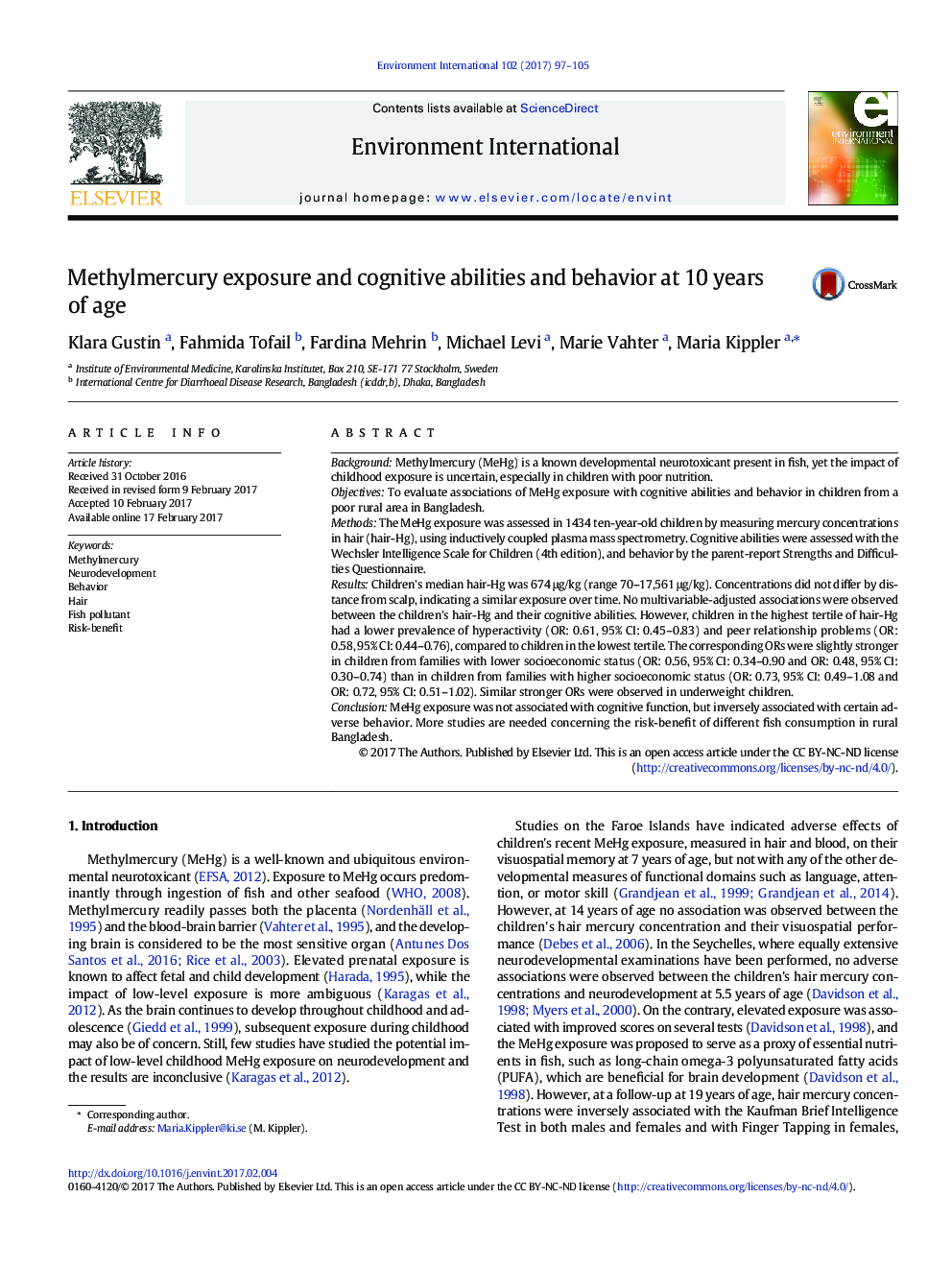| کد مقاله | کد نشریه | سال انتشار | مقاله انگلیسی | نسخه تمام متن |
|---|---|---|---|---|
| 5748250 | 1619028 | 2017 | 9 صفحه PDF | دانلود رایگان |

- Impact of low-moderate MeHg exposure via fish on neurodevelopment is uncertain.
- MeHg exposure at 10Â years of age was not associated with cognitive abilities.
- The highest MeHg exposure levels were associated with less difficult behaviors.
- Beneficial associations with MeHg were stronger in poor and underweight children.
BackgroundMethylmercury (MeHg) is a known developmental neurotoxicant present in fish, yet the impact of childhood exposure is uncertain, especially in children with poor nutrition.ObjectivesTo evaluate associations of MeHg exposure with cognitive abilities and behavior in children from a poor rural area in Bangladesh.MethodsThe MeHg exposure was assessed in 1434 ten-year-old children by measuring mercury concentrations in hair (hair-Hg), using inductively coupled plasma mass spectrometry. Cognitive abilities were assessed with the Wechsler Intelligence Scale for Children (4th edition), and behavior by the parent-report Strengths and Difficulties Questionnaire.ResultsChildren's median hair-Hg was 674 μg/kg (range 70-17,561 μg/kg). Concentrations did not differ by distance from scalp, indicating a similar exposure over time. No multivariable-adjusted associations were observed between the children's hair-Hg and their cognitive abilities. However, children in the highest tertile of hair-Hg had a lower prevalence of hyperactivity (OR: 0.61, 95% CI: 0.45-0.83) and peer relationship problems (OR: 0.58, 95% CI: 0.44-0.76), compared to children in the lowest tertile. The corresponding ORs were slightly stronger in children from families with lower socioeconomic status (OR: 0.56, 95% CI: 0.34-0.90 and OR: 0.48, 95% CI: 0.30-0.74) than in children from families with higher socioeconomic status (OR: 0.73, 95% CI: 0.49-1.08 and OR: 0.72, 95% CI: 0.51-1.02). Similar stronger ORs were observed in underweight children.ConclusionMeHg exposure was not associated with cognitive function, but inversely associated with certain adverse behavior. More studies are needed concerning the risk-benefit of different fish consumption in rural Bangladesh.
Journal: Environment International - Volume 102, May 2017, Pages 97-105